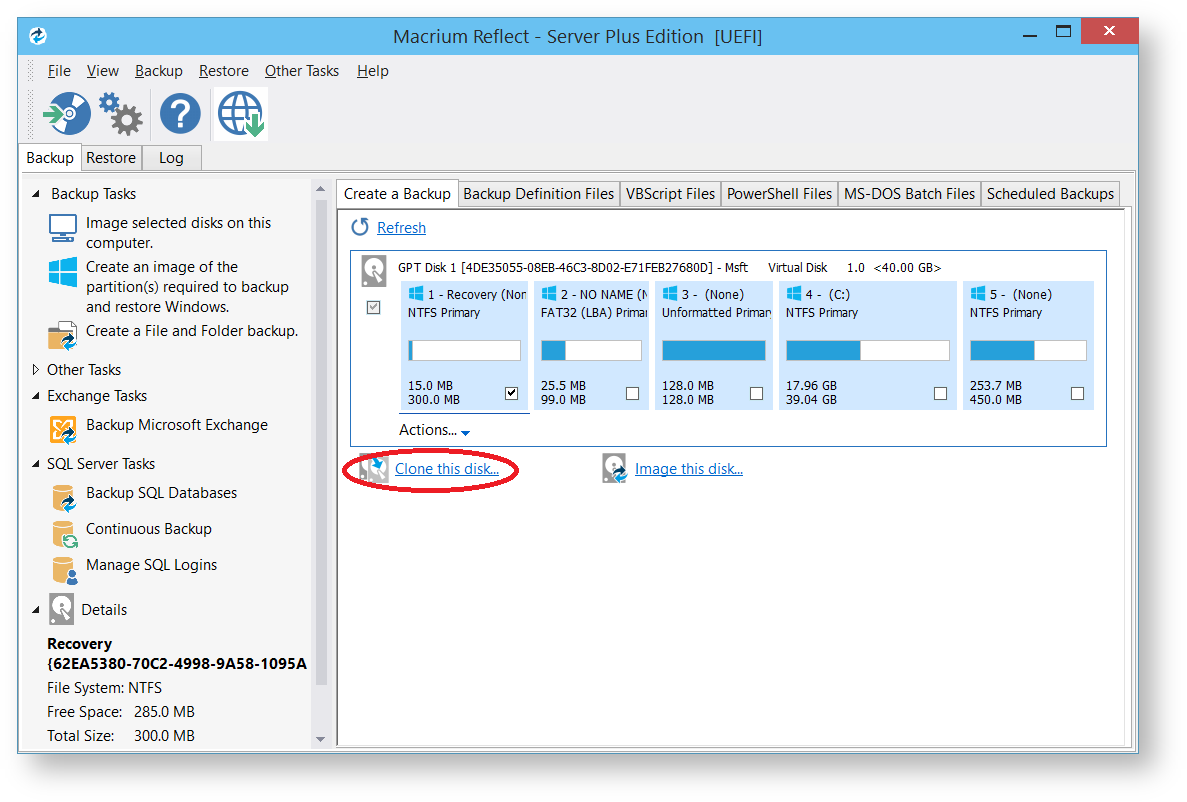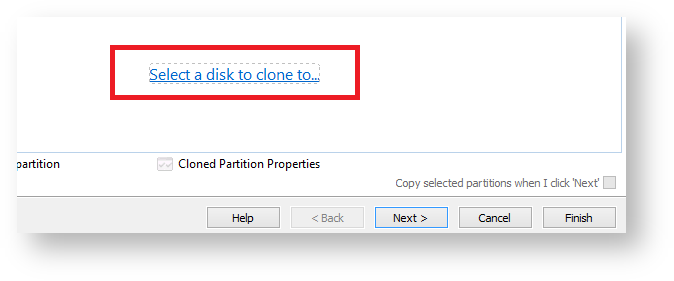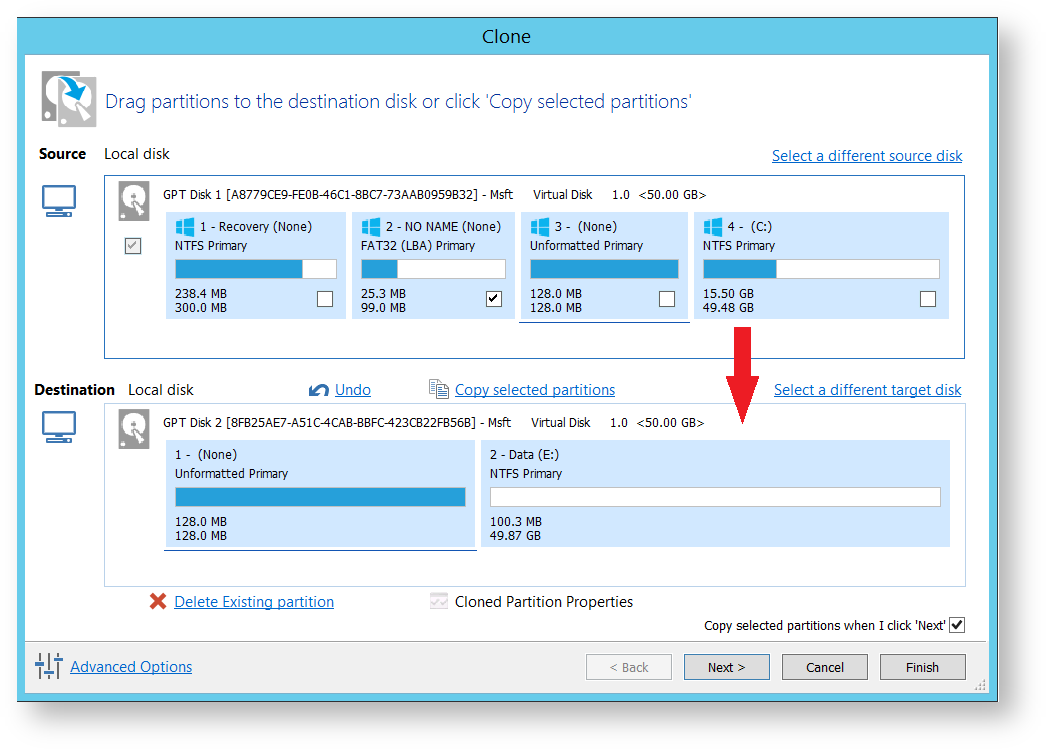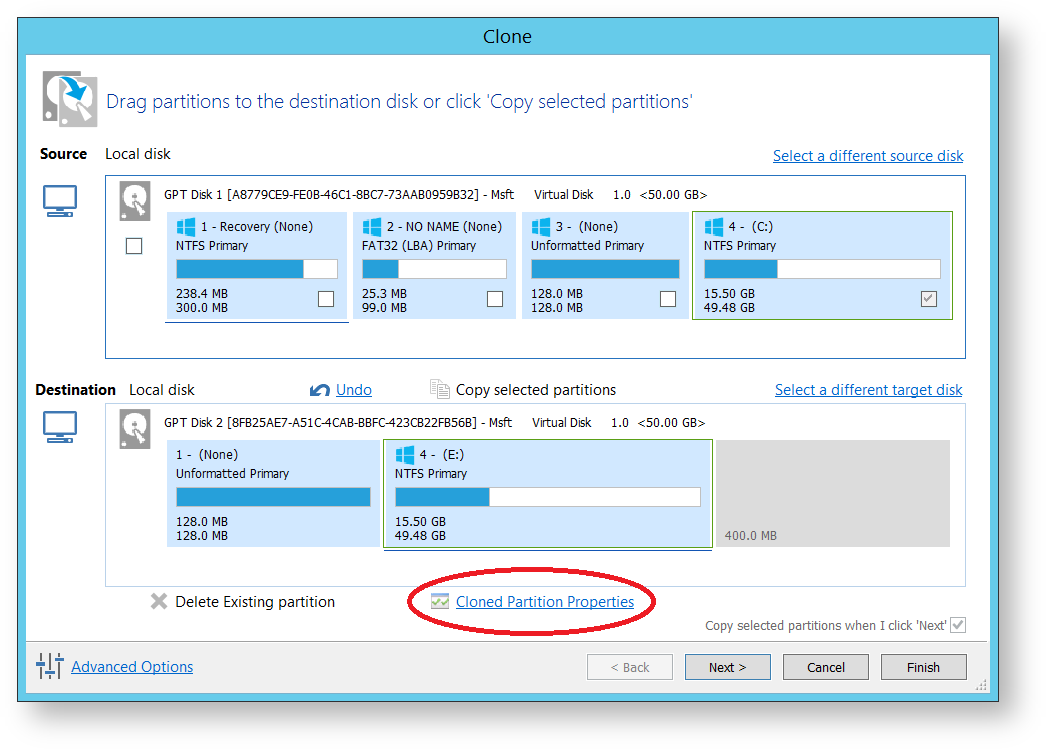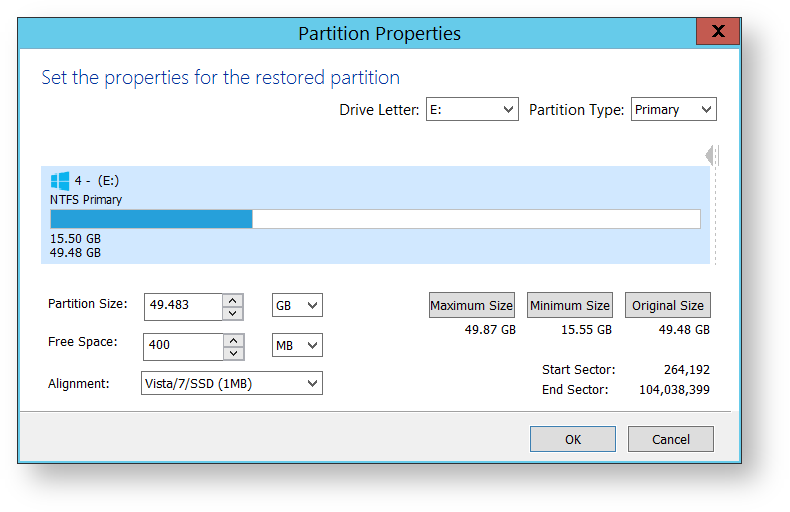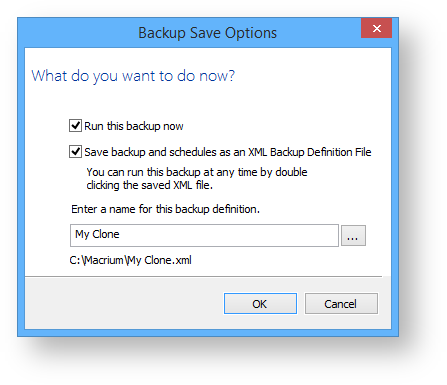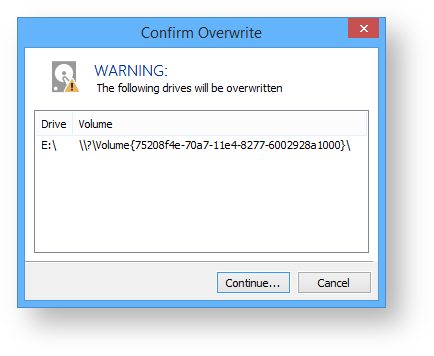...
| Expand | ||
|---|---|---|
| ||
|
Select the disk you wish to clone in the main application window and Click 'Clone this disk'..
- In the wizard that opens Click Select a disk to clone to...
Select the hard disk you wish to clone to. In this case, there is only one disk available.
If you do not want to modify the order or size of partitions of the clone, click Next. This is the default behavior.
Alternatively, drag the partitions you want to clone, the red arrow below shows this.Becomes
In this example, there is 400MB of free space after the copied partition. You can modify the size of each partition to fit the new disk if required.
Info You can delete partitions on the target disk by selecting and clicking 'Delete existing partitions'.. To modify the partition sizes, click Cloned Partition Properties and adjust the size of the partition by:
- Setting the partition size precisely using the Partition Size entry box.
- Resize the partition automatically by clicking Maximum size, Minimum size or Original size.
- Click OK.
- If required, click Advanced Options to change settings for this clone:
Include+ scrollEditorUrl http://knowledgebase.macrium.com/display/KNOW/.Clone+-+Avdanced+Options+v6.0 scrollEditorDisplayTitle Clone - Avdanced Options scrollPageId 0A80000A014D3820DCD1E4BC2A36FAD9 - Click Next.
The options to Add Schedule, Edit Schedule or Delete Schedule is displayed.
Click 'Add Schedule' to optionally schedule your clone
Make any required changes and click Next.
For more information see Scheduling backups. - Review the settings and click Finish.
Verify the settings in Backup Save Options and if appropriate, click OK.
Info Note: Saving a backup definition enables you to run your Clone at any time with a single click Info Note: You must save your backup definition if you have created Clone schedules. Your schedules cannot run if this step is missed. If you want to run the Clone at this point, select 'Run this backup now' and click OK.
A Warning box appears, if appropriate click Continue.
Info title Important The target disk for the clone operation will be overwritten. This is unrecoverable, so please ensure that the target disk contains no valid data.
The clone operation now starts.
...



